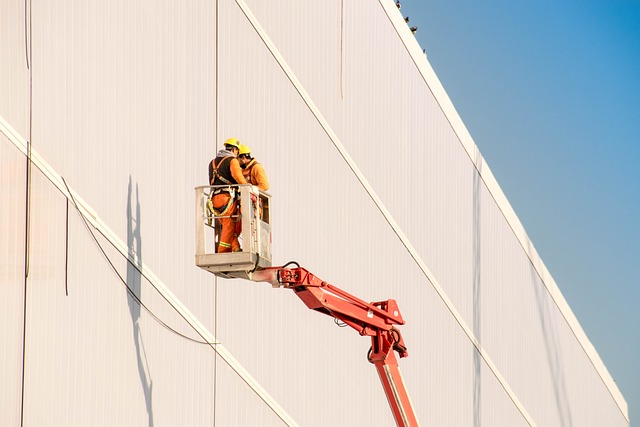Subsurface utility mapping is crucial for identifying and documenting underground infrastructure in urban areas, where traditional methods often lack accuracy and timeliness. Advanced technologies like GPR, EM, and LiDAR are revolutionizing this field by providing higher resolution, precision, and efficiency. These techniques minimize disruptions to public spaces and reduce risks during construction projects. With diverse utility types coexisting beneath cities, accurate mapping is essential for comprehensive asset management. By leveraging GPR and LiDAR, experts can enhance safety, simplify maintenance, and improve emergency response planning, marking a significant change from outdated manual surveys. Future integration with AI promises even greater efficiency in infrastructure management.
In today’s digital era, managing complex utility networks beneath our cities poses significant challenges. Traditional methods for subsurface utility mapping are inadequate, leading to inaccurate data and inefficient infrastructure maintenance. This article explores cutting-edge technologies transforming subsurface utility mapping. We delve into the current challenges, highlight innovative solutions, and discuss the benefits and future prospects of enhanced mapping systems crucial for navigating this intricate landscape.
Understanding Subsurface Utility Mapping: The Need for Advanced Techniques
Subsurface utility mapping is a critical process that involves identifying and documenting underground infrastructure, such as water pipes, gas lines, and electrical cables. With increasing urbanisation and infrastructure development, the complexity of these networks has grown exponentially. Traditional mapping methods often fall short in providing accurate, up-to-date information about the location, depth, and condition of these utilities. This gap highlights the need for advanced techniques in subsurface utility mapping.
Cutting-edge technologies, such as ground-penetrating radar (GPR), electromagnetic induction (EM), and LiDAR, are revolutionising this field. These tools offer higher resolution and precision compared to conventional methods like manual excavation or aerial imaging. By leveraging these advanced techniques, professionals can efficiently map complex utility networks, minimising disruptions to public spaces and reducing the risks associated with accidental damage during construction projects.
Current Challenges in Traditional Utility Network Visualization
In traditional methods of visualizing utility networks, several challenges hinder effective management and maintenance. Often, these systems rely on outdated or manual mapping processes that can be time-consuming and inaccurate, especially when dealing with complex underground infrastructure. The current approach typically involves surveyors utilizing ground penetration radar (GPR) or other similar technologies to identify utilities, but this method is labor-intensive and may not capture the full extent of the network, leading to potential risks during construction projects.
The complexity arises from the diverse range of utility types—including water mains, gas pipelines, electrical cables, and telecommunications conduits—all coexisting beneath urban landscapes. Traditional visualization techniques struggle to integrate and represent this intricate web, making it difficult for utility companies and city planners to gain a comprehensive view of the underground assets. As a result, errors in mapping can lead to costly disruptions during infrastructure development or maintenance work.
Cutting-Edge Technologies: Revolutionizing Subsurface Mapping
The realm of subsurface utility mapping is experiencing a metamorphosis thanks to cutting-edge technologies that are enhancing the way we visualize and manage complex networks beneath our cities. Traditional methods, reliant on manual surveys and outdated maps, are being swiftly replaced by innovative solutions that offer precision, efficiency, and comprehensive data. One such game-changer is Ground Penetrating Radar (GPR), a powerful tool that sends radio waves into the ground to create detailed images of underground utilities. This non-invasive technique provides real-time data, allowing professionals to accurately map pipes, cables, and other critical infrastructure without disturbing the surface.
Additionally, advanced LiDAR technology is revolutionizing subsurface mapping by capturing high-resolution 3D point clouds of the earth’s surface. By analyzing these clouds, experts can identify subtle variations that indicate the presence of utilities buried at various depths. This data is invaluable for construction projects, utility maintenance, and urban planning, ensuring safer and more efficient navigation of complex underground networks.
Benefits and Future Prospects of Enhanced Mapping Systems
Cutting-edge mapping systems, specifically those focused on subsurface utility mapping, offer significant advantages for managing critical infrastructure. These technologies enable precise visualization and documentation of complex utility networks, including pipes, cables, and other underground assets. By leveraging advanced data collection methods such as ground penetration radar (GPR) and LiDAR, these systems provide accurate 3D models that enhance safety, streamline maintenance, and improve emergency response planning.
Looking ahead, the future of enhanced mapping systems holds even greater promise. Integration with artificial intelligence (AI) and machine learning algorithms promises more efficient data processing, automated feature detection, and predictive modeling. This will lead to proactive asset management, minimizing downtime, reducing costs, and optimizing resource allocation. As these technologies continue to evolve, they will play a pivotal role in modernizing infrastructure management, ensuring reliable service delivery, and fostering sustainable urban development.
The evolution of cutting-edge technologies in subsurface utility mapping is transforming the way we visualize and manage complex infrastructure. By overcoming the limitations of traditional methods, advanced systems offer enhanced accuracy, efficiency, and safety in identifying and documenting underground utilities. As these innovative tools continue to refine the process, the future of subsurface utility mapping looks promising, ensuring better-informed decision-making and optimized maintenance for critical network assets.
